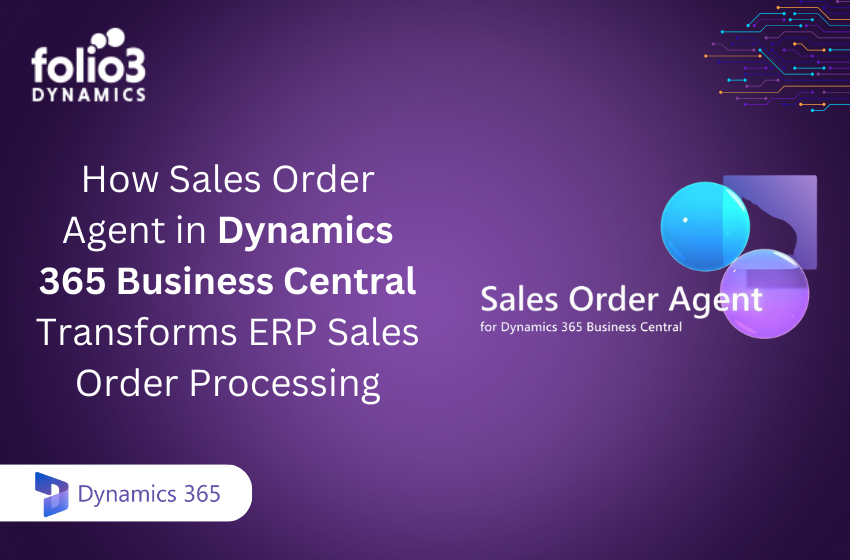In today’s fast-paced and highly competitive business environment, efficiency and accuracy are paramount. Electronic Data Interchange (EDI) has emerged as a crucial technology for streamlining business transactions, reducing errors, and improving overall operational efficiency.
When integrated with robust business management solutions like Microsoft Dynamics 365 Business Central, EDI can transform the way companies handle their day-to-day operations. This guide delves into the concept of EDI, its benefits, and the step-by-step process of integrating it with Dynamics 365 Business Central.
Understanding EDI
Electronic Data Interchange (EDI) refers to the electronic transmission of business documents such as purchase orders, invoices, shipping notices, and other essential documents between business partners.
Unlike traditional paper-based systems, EDI facilitates the automated exchange of data, enabling businesses to process transactions quickly and accurately.
Key Components of EDI
- Standardization: EDI uses standardized formats that allow different companies to communicate seamlessly. Common standards include ANSI X12, EDIFACT, and XML.
- Protocols: EDI transactions are transmitted using secure communication protocols such as AS2, FTP, and HTTP.
- Translation Software: This software converts business documents into standardized EDI formats and vice versa, ensuring compatibility between different systems.
Benefits of EDI
- Speed and Efficiency: EDI significantly reduces the time required to exchange documents, leading to faster transaction processing and improved efficiency.
- Accuracy: By automating data entry and eliminating manual processes, EDI reduces errors, ensuring data accuracy and consistency.
- Cost Savings: EDI minimizes the need for paper, postage, and manual labor, resulting in significant cost savings.
- Improved Business Relationships: EDI enhances collaboration and communication between business partners, leading to stronger and more reliable relationships.
Why Integrate EDI with Dynamics 365 Business Central?
Microsoft Dynamics 365 Business Central is an all-in-one business management solution designed to streamline operations, improve customer interactions, and enable growth. Integrating EDI with Dynamics 365 Business Central offers numerous advantages that can drive business success.
1. Efficiency Gains
Integrating EDI with Dynamics 365 Business Central streamlines the exchange of business documents, automating processes that were previously manual. This automation reduces the time and effort required to process transactions, allowing employees to focus on more strategic tasks.
2. Error Reduction
Manual data entry is prone to errors, which can lead to costly mistakes and delays. EDI integration ensures that data is transmitted accurately and consistently, reducing the risk of errors and improving data quality.
3. Improved Compliance
Many industries have specific standards and regulations for electronic transactions. EDI integration helps businesses maintain compliance with these standards by ensuring that all transactions adhere to the required formats and protocols.
4. Enhanced Visibility
EDI integration provides real-time visibility into transaction statuses and data flows. This visibility allows businesses to monitor and manage their operations more effectively, leading to better decision-making and improved performance.
Step-by-Step Integration Process
Integrating EDI with Dynamics 365 Business Central involves several key steps. By following this structured approach, businesses can ensure a smooth and successful integration.
Step 1: Preparation
- Assess Business Needs: The first step in the integration process is to assess your business needs and determine the scope of the integration. Identify the types of documents you need to exchange, the partners you will be working with, and any specific requirements or constraints.
- Select an EDI Solution: Choose an EDI solution that aligns with your business needs and integrates seamlessly with Dynamics 365 Business Central. Consider factors such as ease of use, scalability, cost, and vendor support when making your selection.
Step 2: Configuration
- Set Up EDI within Dynamics 365 Business Central: Once you have selected an EDI solution, the next step is to set up EDI within Dynamics 365 Business Central. This involves configuring the system to handle EDI transactions and ensuring that all necessary components are in place.
- Configure Data Mappings and Workflows: Data mapping involves defining how data from your business documents will be translated into the standardized EDI format and vice versa. Set up data mappings to ensure that all relevant information is accurately captured and transmitted. Additionally, configure workflows to automate the processing of EDI transactions, from receipt to final processing.
Step 3: Implementation
- Conduct Testing: Before going live with your EDI integration, it is essential to conduct thorough testing. Test all aspects of the integration, including data mappings, workflows, and communication protocols, to ensure that everything is functioning correctly. Identify and resolve any issues that arise during testing.
- Train Staff: Provide training to employees who will be using the EDI system. Ensure that they understand how to process EDI transactions, handle exceptions, and troubleshoot common issues. Proper training is crucial for the successful adoption of the new system.
- Go Live: After completing testing and training, you are ready to go live with your EDI integration. Monitor the initial transactions closely to ensure that everything is working as expected and address any issues promptly.
Step 4: Post-Implementation
- Monitor and Maintain: Ongoing monitoring and maintenance are essential to ensure the continued success of your EDI integration. Regularly review transaction logs, performance metrics, and error reports to identify any potential issues and take corrective action as needed.
- Troubleshoot Common Issues: Be prepared to troubleshoot common issues that may arise with your EDI integration. Common issues include data mapping errors, communication failures, and discrepancies in transaction data. Develop a troubleshooting guide and provide ongoing support to users.
- Scale the Solution: As your business grows, you may need to scale your EDI solution to accommodate increased transaction volumes or additional partners. Ensure that your EDI solution is flexible and scalable, allowing you to expand its capabilities as needed.
Conclusion
Integrating EDI into Dynamics 365 Business Central offers numerous benefits, including improved efficiency, reduced errors, and enhanced compliance. By following a structured approach to integration, businesses can successfully implement EDI and transform their operations. The key steps—preparation, configuration, implementation, and post-implementation—provide a roadmap for achieving a seamless and effective integration.
Embracing EDI technology and integrating it with a powerful platform like Dynamics 365 Business Central can drive significant improvements in business performance, ultimately leading to greater success and competitiveness in the market. For businesses looking to stay ahead in today’s digital age, EDI integration is a critical step towards achieving operational excellence and maintaining strong business relationships.
By leveraging the capabilities of EDI and Dynamics 365 Business Central, companies can ensure accurate, timely, and efficient data exchange, paving the way for growth and innovation. Whether you are just starting your EDI journey or looking to enhance your existing processes, integrating EDI with Dynamics 365 Business Central is a strategic move that can yield substantial benefits for your organization.


